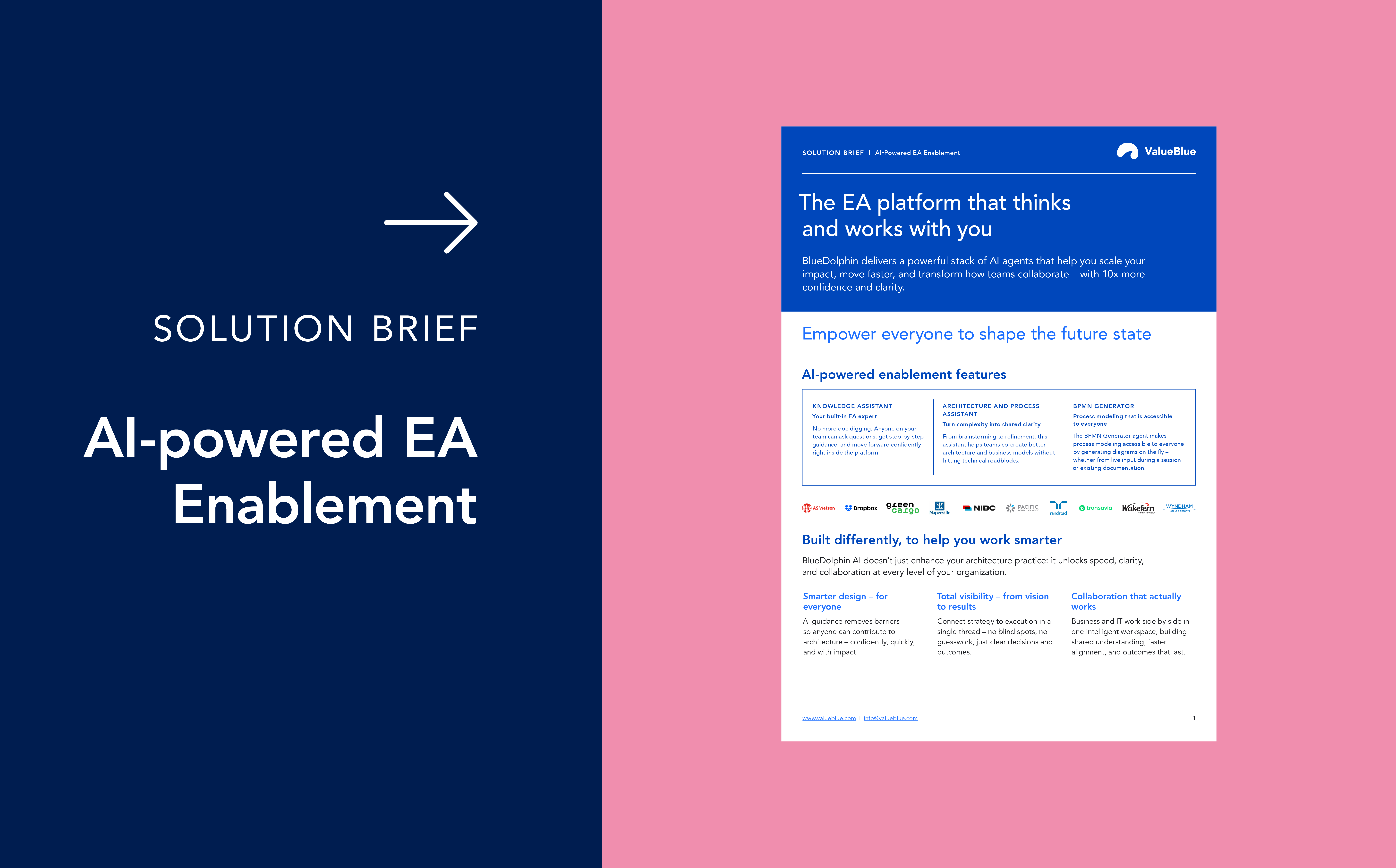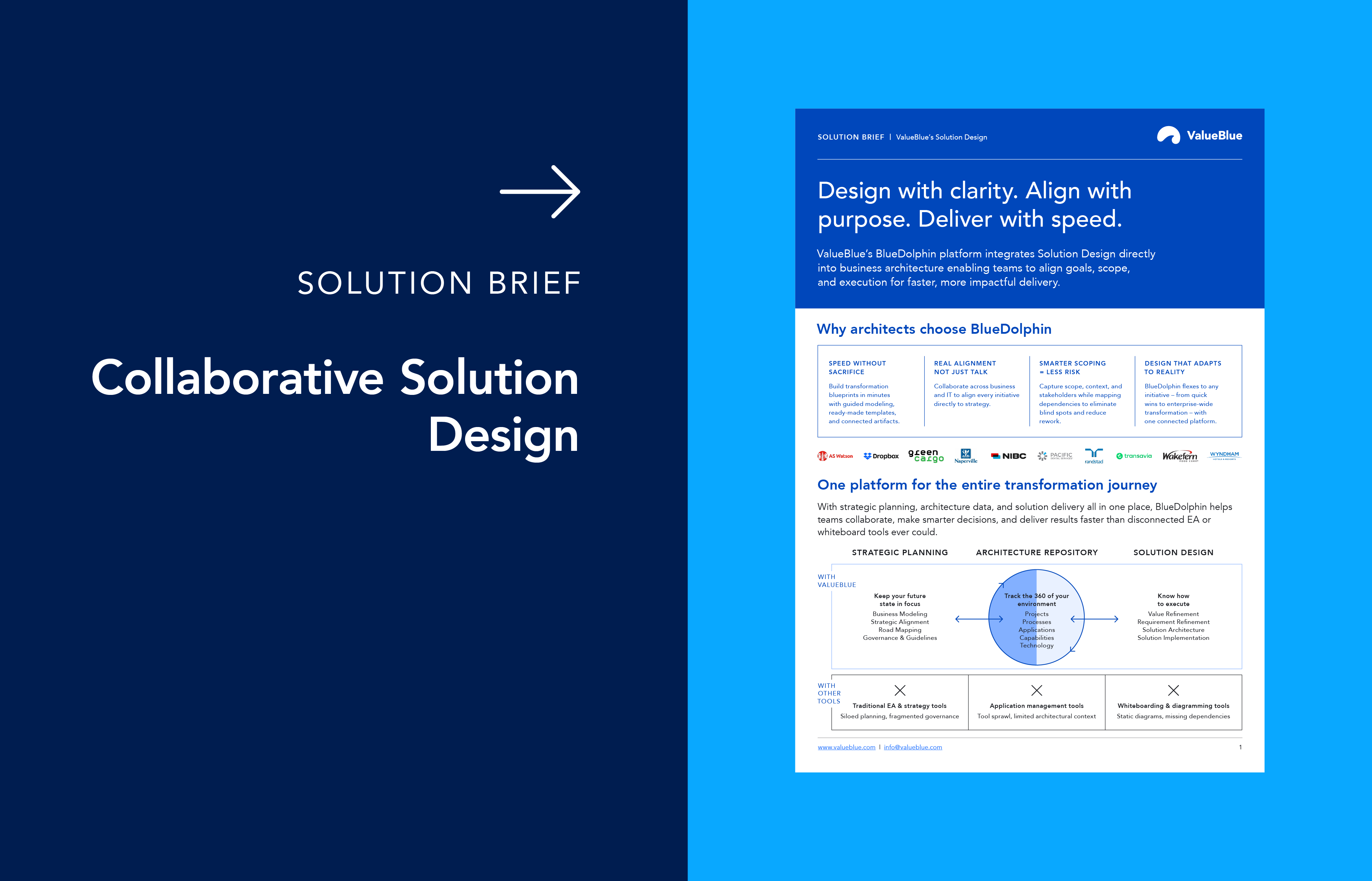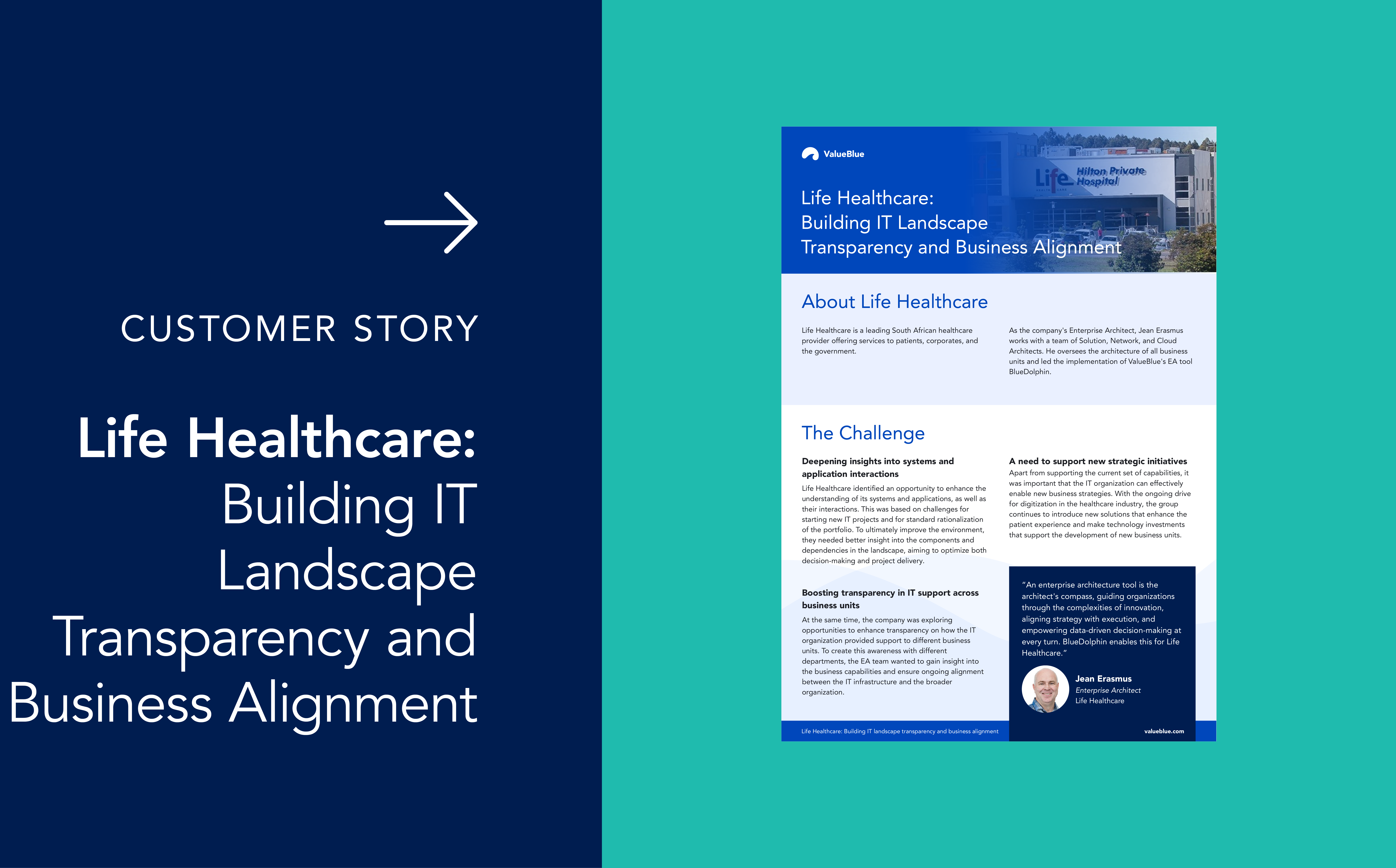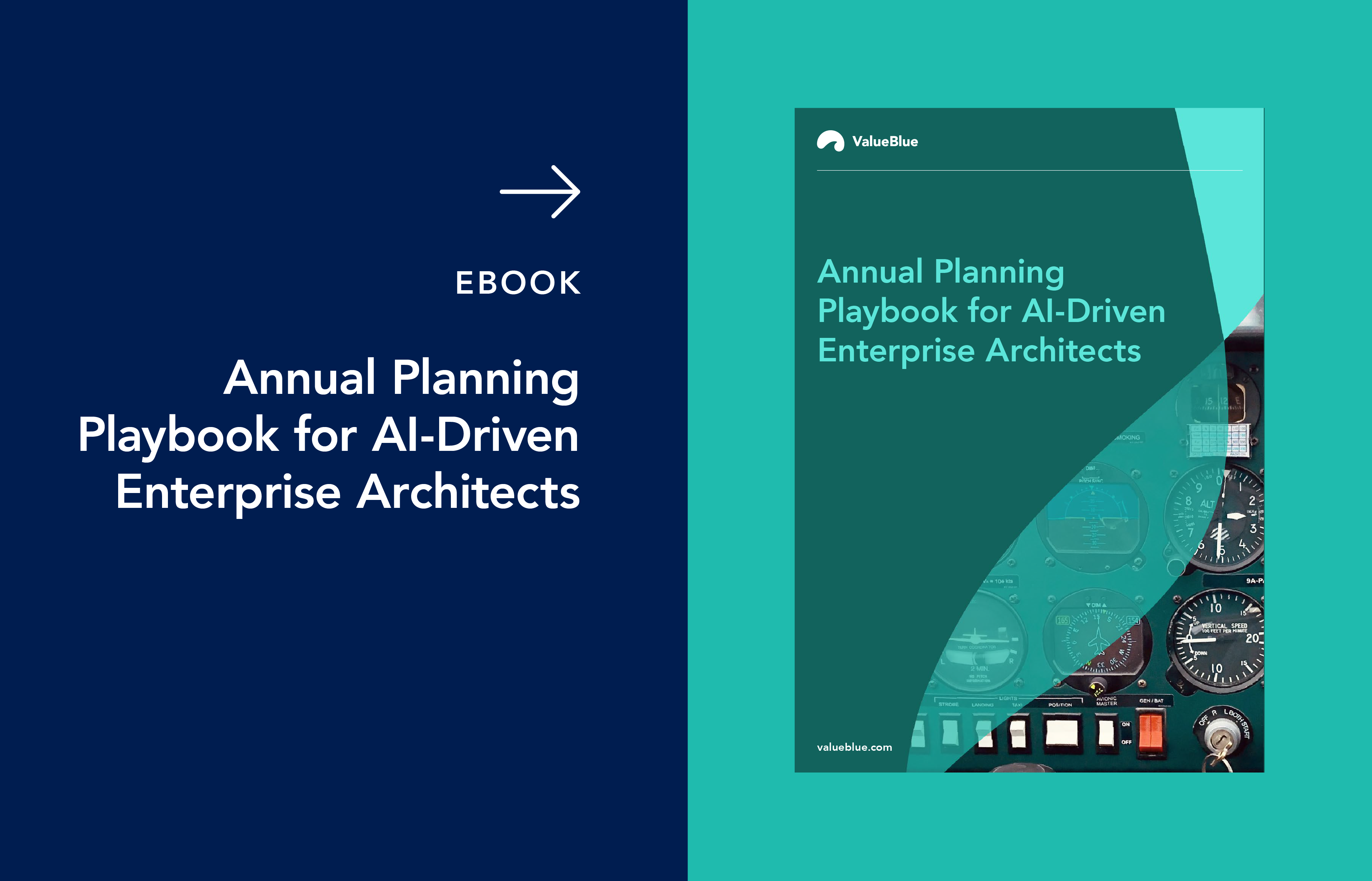5 Tips for Getting Started with Enterprise Architecture
As a critical discipline that supports business change, Enterprise Architecture (EA) has universal applicability, regardless of industry or geography. But if your organization hasn’t traditionally ‘done’ Enterprise Architecture, getting started can seem like a daunting task. To take the first steps, you should first define what Enterprise Architecture is, at its core, and how it can help you deliver value.
As a change-driven function, Enterprise Architecture is all about having a clear vision of 'where you want to get to'. Achieving this desired future state requires an optimal infrastructure supported by best-of-breed talent, processes, and technology.
Although this is typically a long-term game, you don't need a complex Enterprise Architecture framework to get started. Instead, you should focus on the foundational elements that will place you on the right path.
In this blog post, we share 5 tips for starting your Enterprise Architecture practice.
1. Build the right team
Having the right people on your team does not necessarily mean you need an army of enterprise architects. Nor does it require a large collection of technical skill sets and certifications. Enterprise Architecture is as much about technical prowess as it is about communication and building solid internal relationships.
Here are some of the essential skills you should look for in EAs:
Change-focused mindset
One essential soft skill is being change-focused, or an 'architect of change'. This involves looking beyond the immediate ‘now’ and towards the future needs of the business. Think about the long-term value of establishing your Enterprise Architecture practice. Are your team members solely focused on addressing immediate problems or 'fires', or can they achieve long-term results?
Collaboration
Enterprise architects should act as internal consultants, advocating for EA across the organization. Avoid making the common mistake of working in isolation or an 'ivory tower'. Instead, try to engage actively with different teams to align strategies and ensure coherence across projects. Whether you're working with stakeholders on the operational or strategic level, your success hinges on having a comprehensive understanding of the entire organizational landscape.
Effective communication
Regularly presenting results and progress helps build organizational trust and buy-in, reinforcing the value of EA initiatives. For this, you and your team must translate EA jargon into accessible language. By demonstrating the 'why' behind your decisions, you can showcase how EA supports and enhances business performance.

2. Align Enterprise Architecture with business outcomes
Despite outdated beliefs, Enterprise Architecture is not just about IT management and mapping your application landscape. As a strategic partner to the organization, EA should support and enable the realization of business outcomes.
What are business outcomes?
Business outcomes are tangible results that an organization achieves through strategic initiatives, including those related to Enterprise Architecture. They could be of various natures, including financial, regulatory, and customer satisfaction-related.
By starting with a clear definition of the business outcomes and planning backward, you can ensure that all architecture activities contribute directly to the business strategy. This will help you optimize value creation and allow for prioritization (or re-prioritization) of projects and resources.
Examples of business outcomes
Strategic
Strategic business outcomes are high-level results that support the long-term goals and vision of the organization. One example is “offsetting carbon emissions”, with the aim of becoming more environmentally friendly and enhancing the public image. Businesses can achieve this outcome by re-engineering processes or replacing technology providers that don’t meet ESG requirements.
Tactical
Tactical business outcomes, on the other hand, are more immediate and specific. They focus on achieving particular objectives that support broader strategic goals, but often over a shorter term. An example is “upgrading Microsoft Dynamics” to gain access to the latest features. This can help boost the sales team's efficiency, ultimately contributing to higher revenue or other strategic outcomes.
Read more: Strategic vs Tactical Planning in Enterprise Architecture.
Unlock the power of Enterprise Architecture
and drive real business impact!
Download our free eBook and learn:
- Why traditional, centralized EA falls short – and the risks of staying the course.
- How democratized EA empowers agile teams and operational leaders to shape solutions and drive change.
- The role of AI in simplifying EA tools, automating compliance, and making best practices accessible to all.
- Practical steps to build a collaborative, AI-powered EA ecosystem – from basic repositories to real-world pilots.
- How to measure success and ensure continuous improvement with clear KPIs.
3. Think about the ‘golden thread’
An enterprise is complex, and the architecture that builds it up has many moving parts. A mistake that many make in EA is to ‘boil the ocean’, in that they try to do too much in one go. Trying to map all the processes across the enterprise; collecting all information about all applications across the estate; documenting every single integration.
While this can make for great reading in a library, it's a great burden in practice. Maintenance is likely to consume a large portion of your time and distract you from delivering true value.
Instead, focus on the golden thread or the core components of your organization. You can start with a particular set of high-priority outcomes and then move on to people, processes, applications, and technology. Use the principle of ‘just enough architecture’ to guide and inform your decisions.
Concentrating on key activities that align with your business outcomes allows you to effectively 'trace' through the threads of your architecture. This strategy ensures you remain focused on delivering business value, as opposed to getting distracted or falling into analysis paralysis.
4. Centralize your Enterprise Architecture data in one repository
For EA to be impactful, it needs to be well-documented and accessible. A central repository streamlines information flow and ensures that all relevant parties have access to the latest architectural data.
This practice requires the right mix of people and skills. Based on their core focus (or golden thread), your team members can share their unique knowledge and connect the various components of the architecture. Additionally, maintaining this information in a central repository helps eliminate redundancy and ensures that the team has access to current and comprehensive data.
Do I need an Enterprise Architecture tool to get started?
A tool will likely accelerate efforts and make assets easier to maintain and collaborate with. Unlike traditional tools like PowerPoint or Excel, EA tools are better equipped for organizing, labeling, and connecting data points. Some tools will also offer off-the-shelf templates, use case examples, and other types of support to help you get off the ground.
However, what tools shouldn't do is prevent you from taking the first steps. Collecting information can be as simple as creating lists of architecture assets in a SharePoint site or in Confluence. The key is to ensure the environment is shared and that you can continue to build on it.
Remember, this effort should be collaborative – not just for the team, but for the organization. Maintaining communication with other teams is crucial, and data should be the cornerstone of those interactions. Make sure you can share the repository with stakeholders outside of your team, and that the information is relevant and up-to-date.
Discover how BlueDolphin can help you centralize architecture data and facilitate collaboration.
5. Just get started
The most frequent objection we hear is "we don’t have time or resources to do EA properly". This is often a result of overthinking the methodologies or EA frameworks. As mentioned above, not focusing on the golden thread will often make your journey an academic exercise. What you need to do instead is take practical steps.
Start by identifying a high-impact initiative or area of the business needing transformation. By starting with a single solution, you provide an immediate demonstration of EA's value and garner support from stakeholders. As you continue to build your EA practice, you can establish a roadmap that outlines incremental goals and milestones. By mapping your architecture one project at a time, you will continuously build the repository while delivering immediate value.
By making this a collaborative activity, Enterprise Architecture initiatives will blend into everyday project work. In this way, you will not only support other teams, but they will support you, too.
Ultimately, remember that quick wins are possible if you follow the ‘just enough architecture’ principle.
Embracing the journey of Enterprise Architecture
Enterprise Architecture initiatives are not a one-time fix; they require ongoing analysis, adaptation, and change. However, taking the first step is almost always more important than having the ultimate blueprint for success. In EA, as in other disciplines, having the right people and mindset will help you move in the right direction.
Here are some key takeaways to help you on the journey:
- Cultivate a change-focused environment: Concentrate on driving long-term change, rather than fixing immediate problems.
- Make EA a collaborative function: The value of your EA practice is only as strong as your ability to communicate it.
- Focus on 'just enough architecture’: Don't lose time dwelling on every single component of your architecture.
- Deliver value with early wins: Start with meaningful solutions, and build momentum later.
- Collect data in a central repository: Document and map your architecture in a shared space.
The sooner you start, the faster your organization can operate with greater clarity, agility, and strategic cohesion.
Discover how you can get started with BlueDolphin. Book a demo with our team.




